Introduction of Measuring Distance
Important Point
- Distance measurement is usually regarded as the most fundamental of surveying observations. In traditional ground surveys, although many angles might be read, the length of at least one line has to be measured to supplement the angles in locating points.
- In-plane surveying, the distance between two points means the horizontal distance. When the points are at different elevations, the distance is the horizontal length between vertical lines in the points.
- Lengths of lines could be specified in different units. In the USA, the foot, decimally divided, is usually used through the meter is becoming more and more common. Geodetic surveys and lots of highway surveys use the meter.
- In machine and architectural function, and on some construction projects, the unit is a foot divided into inches and fractions of an inch.
- In surveying, the most commonly employed units are such as length, area, volume, and angle.
- Two different systems are in use for specifying units of observed quantities, both the English and metric systems.
- Due to its widespread adoption, the metric system is called the International System of Units and abbreviated SI
Also, read: What is Consistency of Cement
What Is Linear Measurement Surveying?
Surveyors are concerned with the measurement of vertical and horizontal distances and angles and, even more recently, with direct positioning.
These, then, are used in a variety of combinations in traversing, triangulation, trilateration, mixed-mode operations, mapping, layout staking, leveling, etc.
Types of Liner measurement surveying.
- Direct Measurements.
- Measurements by Optical Means
- Electra-Magnetic Methods.
In the case direct measurements, distances are measured on the ground with the help of a chain or tape or any other instrument.
In the optical methods, observations are taken through a telescope, and calculations are done for the distances, such as in tachometer or triangulation. In the electro-magnetic methods, distances are measured with instruments that rely on propagation, reflection, and subsequent reception of either radio waves. Light waves or infrared waves.
Also, read: Difference Between One Way Slab and Two Way Slab | What is Slab
1. Direct Measurements.
Measuring the distance directly as below
- Pacing
- Measurement with Passometer
- Measurement with Pedometer
- Measurement by Odometer and Speedometer
- Changing
1.1. Pacing
Measurements of distances by pacing are chiefly confined to the preliminary surveys and explorations where a surveyor is called upon to do a rough survey as quickly as possible.
It may also be used to roughly check the distances measured by other means. The method consists of counting the number of paces between the two points of a line.
The length of the line can then be computed by knowing the average length of the pace. The length of pace varies with the individual, & also with the nature of the ground, the slope of the country, and the speed of pacing.
A length of pace, more nearly that of one’s natural step, is preferable. The length of one’s natural step may be determined by walking on the fairly level ground over various lines of known lengths.
One can soon learn to pace distances along with level, unobstructed ground with a degree of accuracy equivalent approximately to 1 in 100. However, pacing over rough ground or on slopes may be difficult.
Also, read: What is Plum Concrete | Application | Mix Design | Methodology
1.2. Measurement with Passometer
Passometer is an instrument shaped like a watch that is carried either in the pocket or is attached to one leg.
When the person wearing the Passometer walks, it counts the number of paces the person has moved.
Then by multiplying the number of paces with the average pace length, the distance between the two end stations can be determined.
Also, read: Principle of Plane Table Surveying Methods |Equipment | Error | Advantage | Limitation
1.3. Measurement with Pedometer
A pedometer is a device similar to the pedometer except that, adjusted to the length of the pace of the person carrying it. It registers the total distance covered by any number of paces.
Also, read: What Is Traversing in Surveying | Types | Method | Definition
1.4. Measurement by Odometer and Speedometer
The odometer is an instrument for registering the number of revolutions of a wheel. The well-known speedometer works on this principle.
The odometer is fitted to a wheel that is rolled along the line whose length is required. The number of revolutions registered by the odometer can then be multiplied by the circumference of the wheel to get the distance.
Since the instrument registers the length of the surface actually passed over, its readings obtained on the undulating ground are inaccurate. If the route is smooth, the speedometer of an automobile can be used to measure the distance approximately.
Also, read: What Is Bulkage of Sand (Fine Aggregate )
1.5. Changing
Changing
Chaining is a term that is used to denote measuring distance either with the help of a chain or a tape and is the most accurate method of making direct measurements.
For work of ordinary precision, a chain can be used, but for higher precision, a tape or special bar can be used. The distances determined by chaining form the basis of all surveying.
No matter how accurately angles may be measured, the survey can be no more precise than the chaining.
Also Read: Survey Leveling
2. Measurements by Optical Means
In this method, observations are taken through a telescope, and calculations are done for distances such as in tachometer (stadia) or in triangulation.
Tachometer (stadia is the common term in the USA ) is a surveying method utilized to quickly determine the horizontal distance to, and elevation of, a point.
Stadia observations are accessed by sighting through a telescope equipped with two or more horizontal cross wires in a spacing that is known
The apparent intercepted length between the bottom and top wires is read onto a graduated rod held vertically in the desired stage.
The space from the telescope to a rod is seen by proportional relationships in similar triangles. Accuracy of 1/500 of this distance is achieved with reasonable care
Also, read: Methods of Design | Difference Between Working Stress Method and Limit State Method
3. Instruments Used in the Tachometer
3.1. Tacheometer
It’s Only a transit theodolite fitted Using a stadia diaphragm along with an analytic lens. As per below fig, No-1 shows the different forms of stadia diaphragm commonly used:
Stadia fig. No-1
3.2. Levelling Staff and Stadia Rod
For short distances, ordinary leveling staves are used. The leveling staff is normally 4 m long and can be folded into three parts.
The graduations are so marked a minimum reading of 0.005 or 0.001 m, could be taken. For long sights, as specially designed graduated rod is utilized, which is called a stadia rod.
It’s also 4 m long, and could possibly be telescopic or brushed. The graduations are comparatively clear and daring, and the minimum reading Which Can Be taken is 0.001 m.
Also, read: What Is a Bar Bending Schedule | Preparation as Per Bs 4466 | Tolerances as Per Bs 4466
3.3. Electra-Magnetic Methods
In the case of electronic methods, the distances are measured with instruments that are based on propagation, reflection, and subsequent reception of either radio or light waves.
The instruments used under the electronic methods are Geodimeter, Tellurometer, and Decca Navigator, etc.
The main instrument for surveyors on site today is the ‘total station.’ It is an instrument that combines the angle measurements that could be obtained with a traditional theodolite with electronic distance measurements.
Taping distance, with its associated problems, has been rendered obsolete for all base-line measurement.
The distance can now be measured easily, quickly, and with great accuracy, regardless of terrain conditions.
Modern total stations as in as per below fig no-2 and as in as per below fig no-3 contain algorithms for reducing the slope distance to its horizontal and vertical components.
Total Station Courtesy of Leica Geosystems Fig No.-1
Total Station courtesy Topcon Fig No.-2
For engineering surveys, total stations with automatic data logging are now standard equipment on site.
A typical measurement of distance takes between 1.5 and 3 s. Automatic repeated measurements may be utilized to improve reliability in tough atmospheric conditions.
Tracking modes, for the setting from distance, repeat the measurement several times a second. Total stations with their inbuilt EDM enable:
- Traversing over great distances, with much greater control of swing errors.
- The inclusion of the many more measured distances into control networks, rendering classical triangulation outdated. This results in a much greater control scale error.
- Setting-out and photogrammetric control, over the large areas, by polar coordinates from a single baseline.
- Deformation monitoring into sub-millimeter accuracies using high-precision EDM, such as the Mekometer ME5000.
- This instrument has a range of 8 km, and an accuracy of ±0.2 mm ±0.2 mm/km of the distance measured ignoring unmodelled refraction effects.
Also, read: What Is Workability of Concrete | Factors Affecting Workability | Test |Errors
Types of Linear Measurement in Surveying
Linear measurements in surveying can be performed by mainly three methods namely direct method, electromagnetic methods and optical methods. The direct method is the common method that employs a chain, tape or any other instrument to measure the linear distance.
Linear Measurement Instruments for Surveying
Instruments Used
- Chain.
- Tape.
- Arrows.
- Ranging rod and offset rods.
- Tacheometer.
- Electro-Magnetic distance measuring (EDM) device.
Importance of Linear Measurement in Surveying
Surveyors are concerned about measuring both horizontal and vertical distances. And while many angles are read, surveyors need to determine the length of at least one line to supplement them at specific locating points. This is the purpose of linear surveying.
Linear Measurement Errors in Surveying
In surveying, linear measurement errors refer to the inaccuracies or deviations that occur when measuring distances between points on the ground. These errors can arise due to various factors, both systematic and random. Here are some common linear measurement errors in surveying:
- Instrumental Errors: These errors occur due to imperfections or malfunctions in the surveying instruments used for measuring distances, such as theodolites, total stations, or EDM (Electronic Distance Measurement) devices. Instrumental errors can result from issues like misalignment, incorrect calibration, faulty components, or inadequate maintenance of the equipment.
- Environmental Factors: Environmental conditions can affect the accuracy of linear measurements. Factors like temperature, humidity, atmospheric pressure, and wind can introduce errors, especially in instruments that are sensitive to these parameters. For example, temperature variations can cause expansion or contraction of measurement tapes or EDM equipment, leading to inaccuracies.
- Refraction: Refraction is the bending of light rays as they pass through different media, such as the Earth’s atmosphere. When surveying over long distances, particularly over water bodies or uneven terrain, refraction can cause errors in linear measurements. This effect is more significant for optical instruments like theodolites and less pronounced
Types of Linear Measurement Surveying Techniques
Linear measurements in surveying can be performed by mainly three methods namely direct method, electromagnetic methods and optical methods.
linear Surveying
This is the purpose of linear surveying. It involves using survey equipment to measure the distance between two points on the Earth’s surface, which can be accomplished in different ways (depending on the level of accuracy required).
Linear Measurement in Surveying
Linear measurement is the measurement of the distance between the two points or objects, or it can also be defined as the gap between the leftmost end and the rightmost end. Linear measure refers to measurements that are directly proportional to the distance traveled along the axis of the measurement.
What Is Linear Measurement?
What is Linear Measurement? The linear measurement is the distance between the two given points or objects. Thus, we can define length as: “Total gap measured between the leftmost and rightmost end of an object in the mentioned system of units.” Measuring the length of a banana using tape.
What Is Linear Measurement in Surveying?
In an engineering survey, the linear horizontal distance has to be measured. The measurement of this linear horizontal distance between two points on the earth’s surface is known as linear measurement.
Which Instrument Registers Total Distance Covered by Any Number of Pace?
Passometer except that, adjusted to the length of the pace of the person carrying it, it registers the total distance covered by any number of paces.
Land Survey Measurements
The basic unit is an acre. An acre equals a square 208.7 feet by 208.7 feet, 43,560 square feet, 160 square rods, or 10 square chains (10 x 66′ x 66′). An acre is about the same area as a football field, including the end zones.
Survey Measurement
The five common types of survey measurements are horizontal distances and angles, vertical distances and angles, and slope distances. Angles and distances are measured relative to either a horizontal or vertical plane.
Distance Measurement in Surveying
In surveying, the distance between two points is understood to mean the horizontal distance, regardless of the relative elevation of the two points. Frequently, the lay of the land between the two points is not uniform, or the elevation of the two points is very different.
Like this post? Share it with your friends!
Suggested Read –
- Types of Total Station
- Control Line Construction
- West Point Bridge Designer
- What Is Plaster | Types of Plaster | Defects In Plastering
- Difference Between CPM and PERT | What Is CPM & PERT
- Difference Between One Way Slab and Two Way Slab | What is Slab
- What Is Unit Weight | What Is Density | What Is Unit Weight Material | Unit Weight Building Materials
- What Is Diversion of Headworks (Rivers) | Types of Diversion Headworks | Component Parts of Diversion Headworks (Rivers)
Originally posted 2023-06-26 12:05:54.
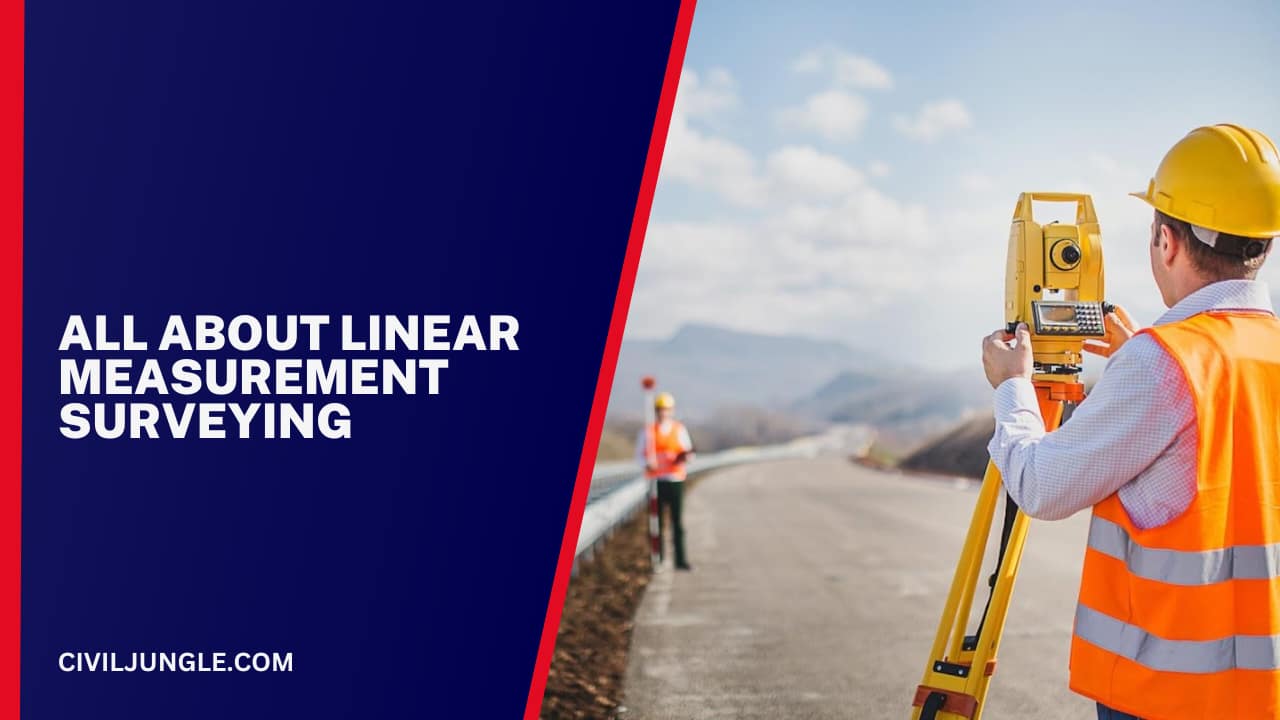
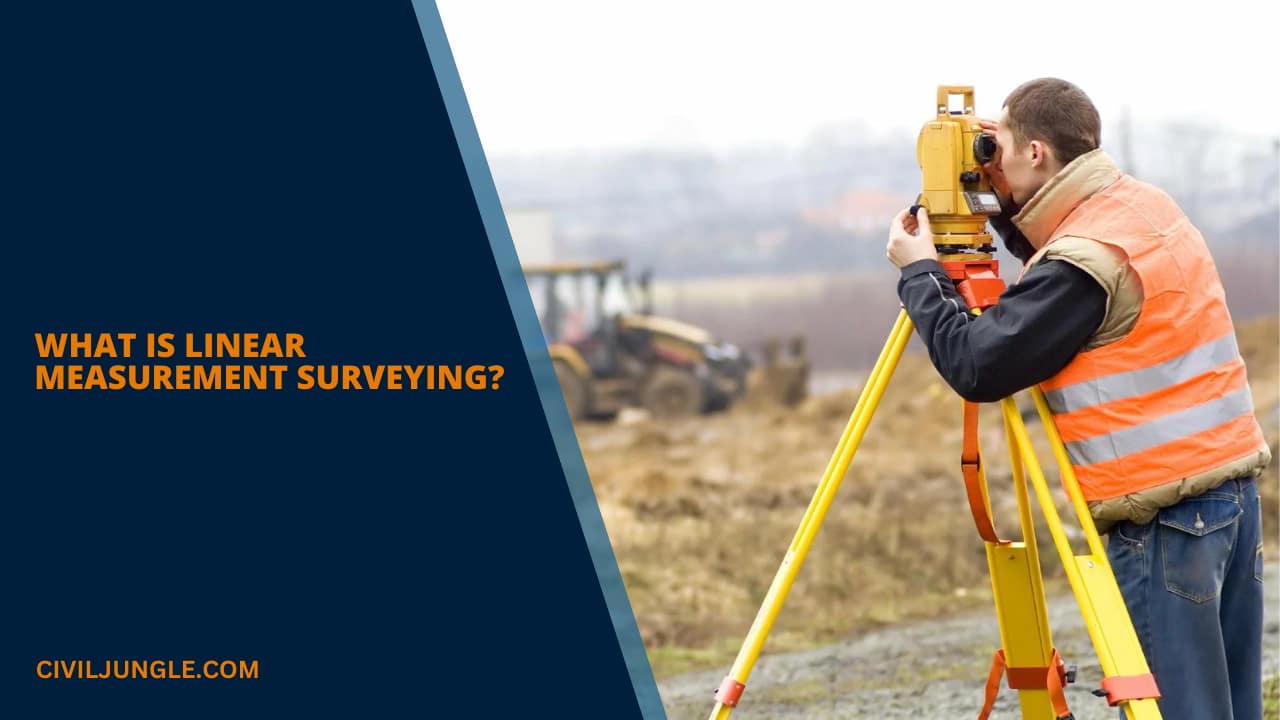
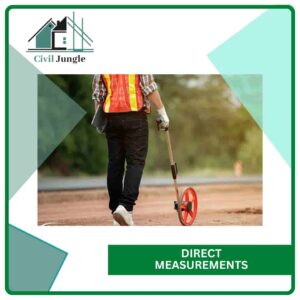
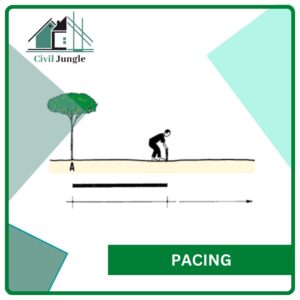
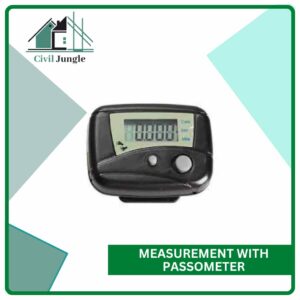
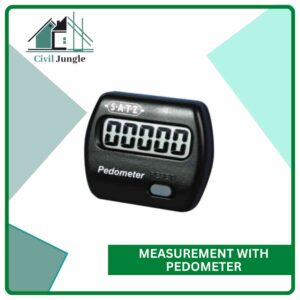
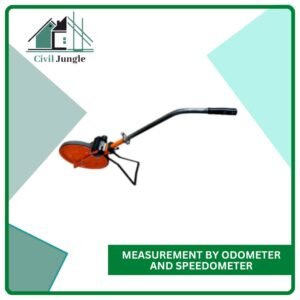
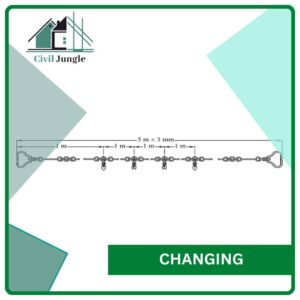
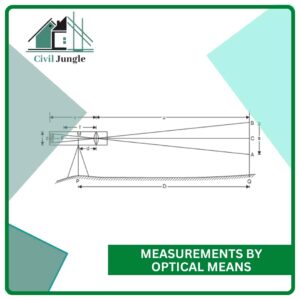


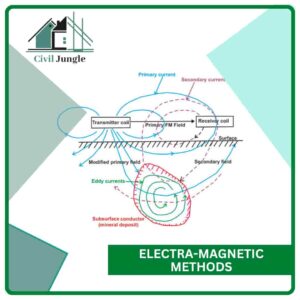
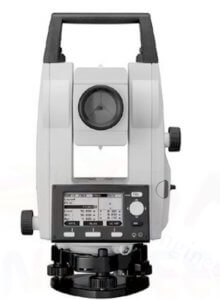


Leave a Reply